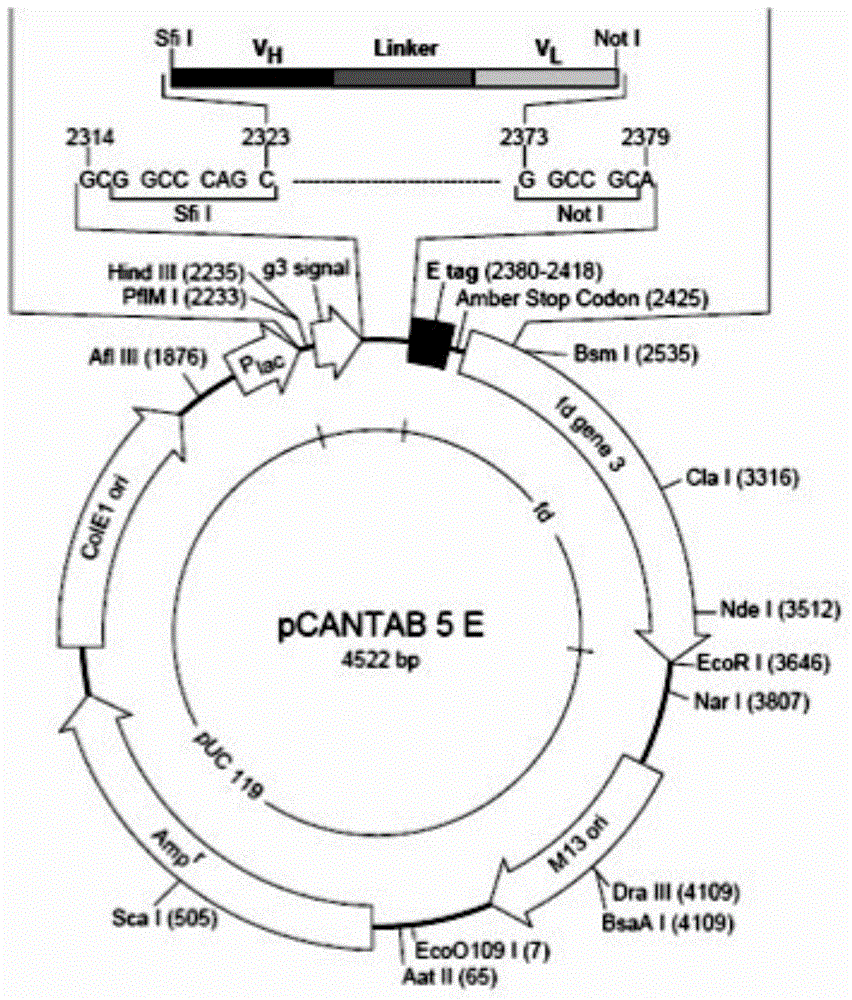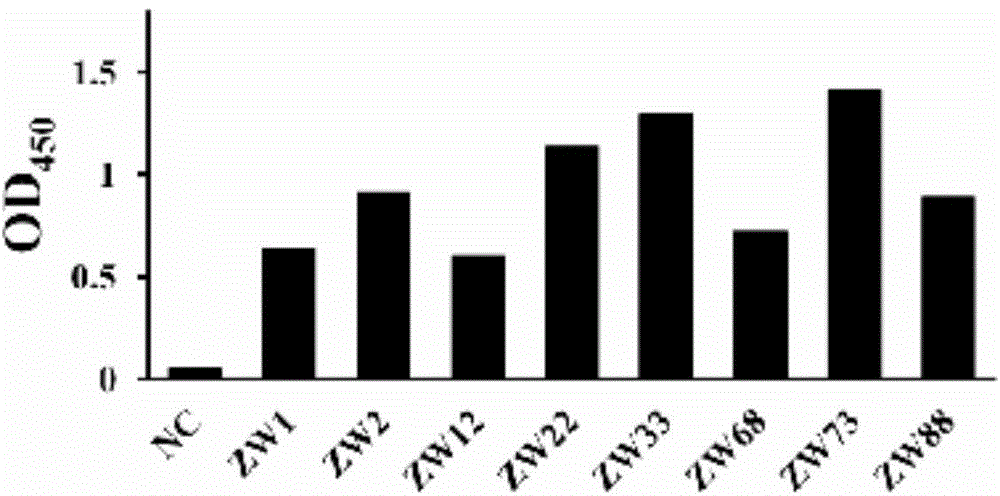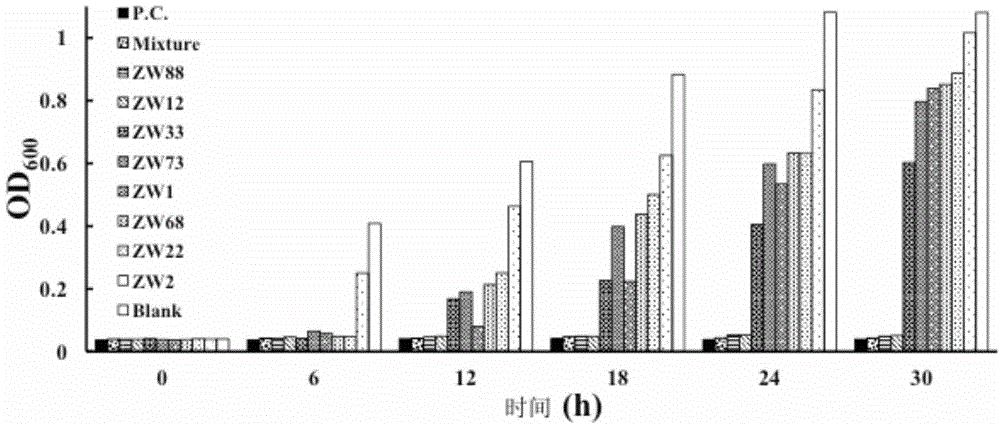Bovine-derived anti-staphylococcus aureus genetic engineering single-chain antibody, preparation method and application thereof
A single-chain antibody, staphylococcus technology, applied in the field of genetic engineering, can solve problems such as unsatisfactory effect, difficult to cure, and antibiotic resistance easily, and achieve better effect.
- Summary
- Abstract
- Description
- Claims
- Application Information
AI Technical Summary
Problems solved by technology
Method used
Image
Examples
Embodiment 1
[0030] Example 1 Construction of bovine phage single-chain antibody library
[0031] 1: Collect the blood of dairy cows suffering from mastitis, and when the serum antibody titer detected by ELISA is greater than 1:20000, continue the follow-up experiment. Bovine peripheral blood leukocytes were extracted from anticoagulated blood, and total RNA was extracted by Trizol method (TRIZOL Reagent was purchased from TaKaRa Company). Using the extracted total RNA as a template, Oligo primer was used to synthesize the first-strand cDNA according to the product instructions of the reverse transcription kit (cDNA first-strand synthesis kit was purchased from TaKaRa Company).
[0032] 2: Analyze the variable region sequence of the bovine antibody coding gene in the published literature, and design primers for amplifying the light and heavy chains of the antibody according to the FR region (Table 1), wherein VH F and VH R are used to amplify the VH region; VL F and VL R are used to ampli...
Embodiment 2
[0038] Example 2 Screening of bovine-derived anti-Staphylococcus aureus single-chain antibody
[0039]1: Prepare the whole bacterial antigen of Staphylococcus aureus (ATCC25923) by enrichment and panning, and coat overnight at 4°C; seal the 96-well plate with PBS containing 4% skimmed milk powder and incubate at 37°C for 2 hours; add the above step to the 96-well plate The prepared single-chain antibody phage antibody library was incubated at 37°C for 2 hours, washed 10 times with PBST and PBS respectively, and unbound free phages were washed away; 100 μl of 0.2mol / L Gly-Hcl buffer (pH=2.2) was added to each well The specifically bound phages were eluted, and 50 μl of 1mol / L Tris-Hcl (PH=9.1) was added to neutralize the eluate; after the remaining part of the eluate was infected with Escherichia coli TG1, the above steps were repeated. Repeat this for 3-5 rounds. After the first round, the stringency of washing should be increased: wash with PBS 20 times after elution with PBS...
Embodiment 3
[0041] Example 3 Recombinant scFv sequence analysis
[0042] Sequencing of the obtained 8 single-chain antibody ZW.1, ZW.2, ZW.12, ZW.22, ZW.33, ZW.68, ZW.73, ZW.88 encoding genes, to prove that they read correctly The frame sequence is inserted into the phagemid vector pCANTAB5E, the amino acid sequence is shown in SEQ ID No.17-24, and the sequence sequence is VL-Linker-VH.
PUM
 Login to View More
Login to View More Abstract
Description
Claims
Application Information
 Login to View More
Login to View More - R&D Engineer
- R&D Manager
- IP Professional
- Industry Leading Data Capabilities
- Powerful AI technology
- Patent DNA Extraction
Browse by: Latest US Patents, China's latest patents, Technical Efficacy Thesaurus, Application Domain, Technology Topic, Popular Technical Reports.
© 2024 PatSnap. All rights reserved.Legal|Privacy policy|Modern Slavery Act Transparency Statement|Sitemap|About US| Contact US: help@patsnap.com










